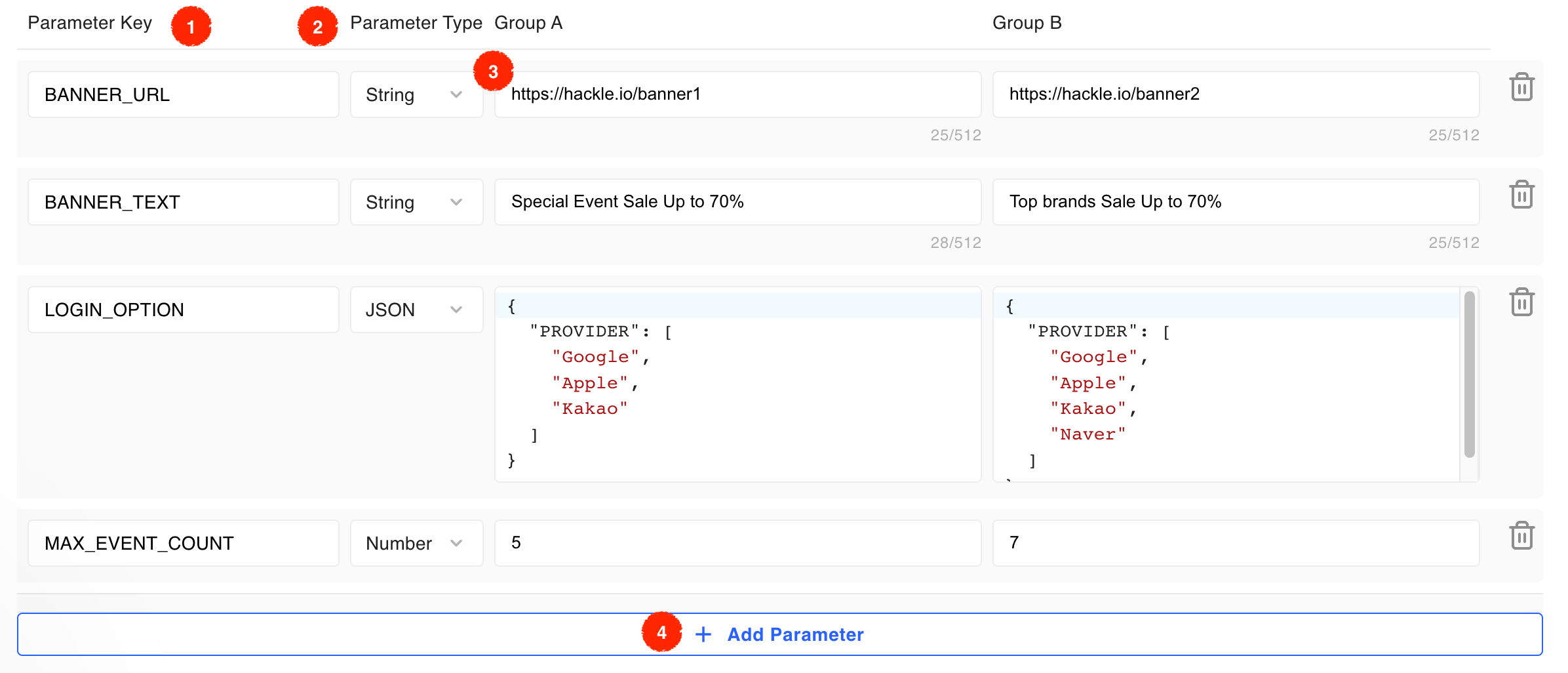Step 4-1 : Set Parameter
What is a parameter?
When implementing group-specific changes to the A/B test, you can flexibly apply those items as parameters including text, URL, and numbers. Complex variables can be created and managed by JSON.
The value of the item set as a parameter can be updated by the simple dashboard configuration. The changed value will be updated promptly.
Conditions for Parameter SettingsSDK
- Supported SDK: JavaScript, Android, iOS, React, React Native, Unity, Java/Kotlin, Node.js, Flutter
- Supported Version : iOS/Android 2.9.0+, React Native 3.3.0+, Javascript/React/Node.js 11.7.3+, Java/Kotlin 2.8.0+ , Unity 1.3.0+, Flutter 1.0.0+
SDK document linkSupported Plan
- Pro plan or above
Setting parameters
- Parameter settings can be set and modified when the A/B test in [Production Environment] is ready and cannot be modified after start.
a. If you want to modify the parameters after the start, please create a new version of the A/B test or create a new A/B test. - Parameter settings can be used by setting the production environment and the development environment separately.

1. Parameter key
Please enter the parameter key set on the code in the corresponding area. The parameter key is a required field; the key value can only be alphabetic, numeric, _, -, . and has a length limit of between 1 and 128 characters. The same key cannot be duplicated within one A/B test.
2. Parameter type
Set the type of parameter that will be entered in the parameter value. Each type has a different input to the parameter value.
- String
- Number
- Boolean
- JSON
3. Parameter value
You can set the desired value for each group. This setting will not be reflected to the user until the A/B test begins. However you can test it with the test device override even for draft status.
4. Add a new parameter
The parameter can be set up to 10 via the Add Parameter button
How to set parameters
- Visit A/B Test > Test details page to generate items to manage as parameters. Create parameter keys and select the appropriate type.A
a. Example : banner_text - String, landing_url - String, font_size - Number
b. JSON type can manage multiple items with a single key. - For each group, enter the parameter values that you want to apply to the parameter key.
- Write or Coy&Paste the parameter key in the code for each A/B test group and implement to return the corresponding parameter values for each group.
- Verify that the parameter key/value is properly returned for each group using the test device functionality.
- If the item you set as a parameter has been successfully applied, you are ready to start the A/B test!
Updated 5 months ago
